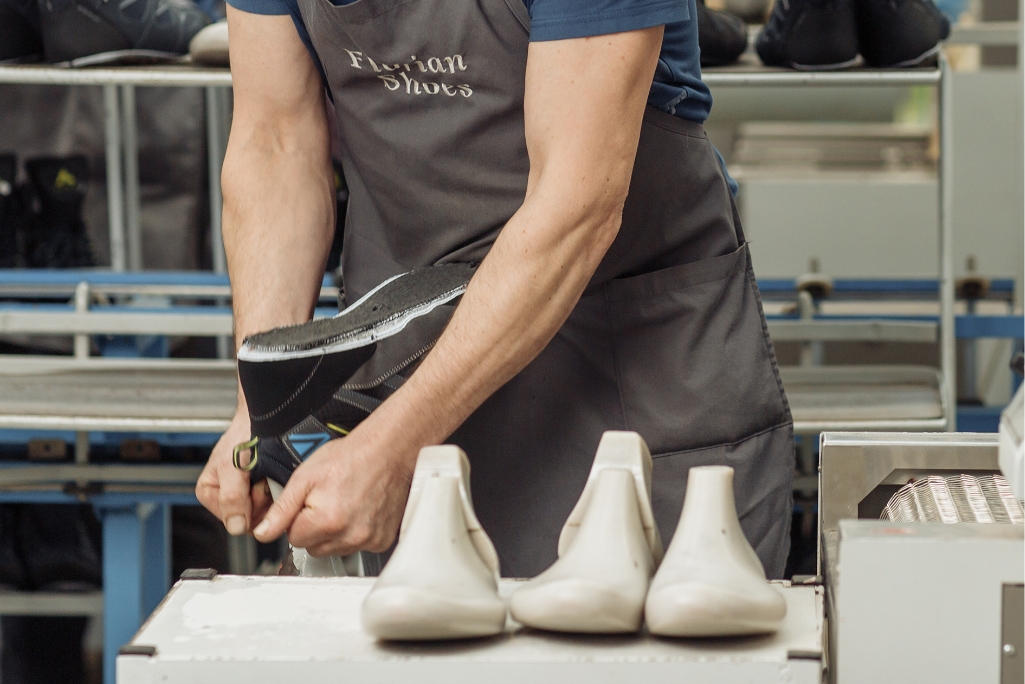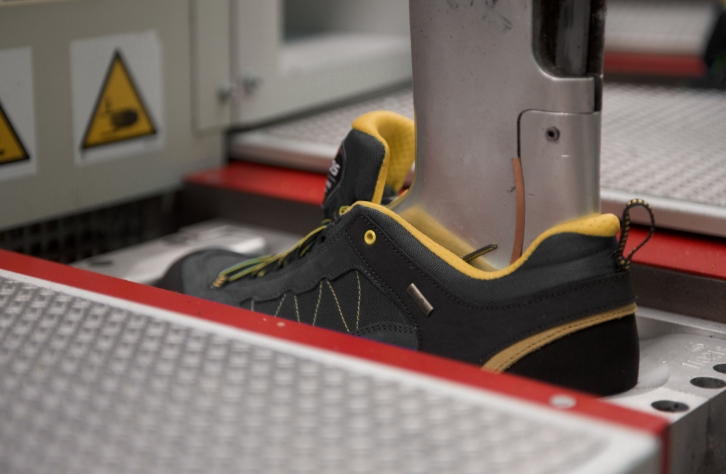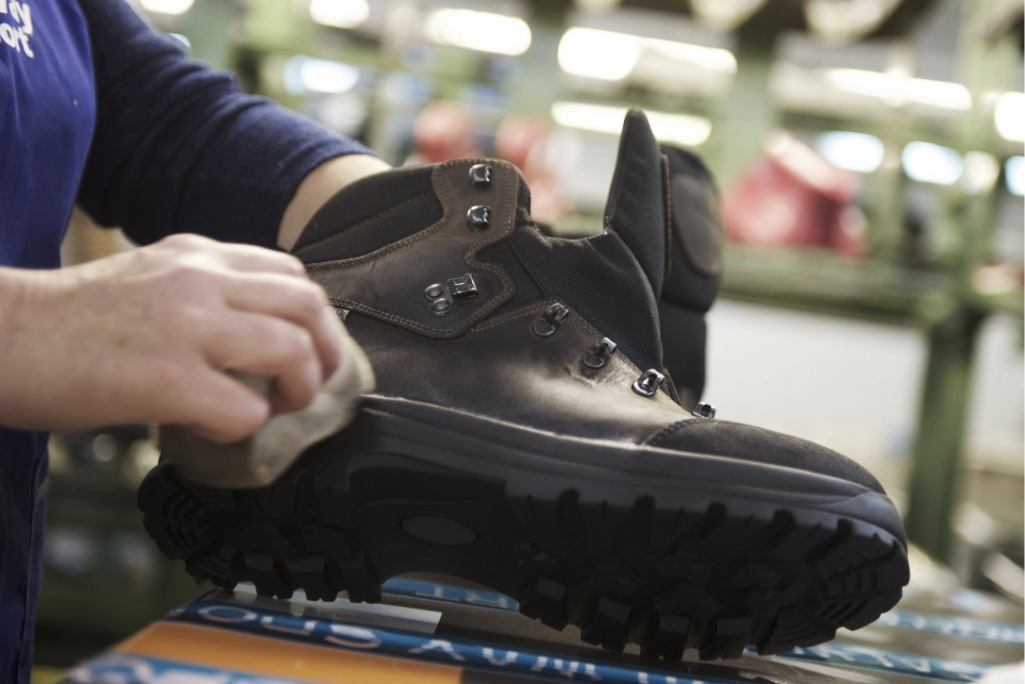OUR PRODUCTION PROCESS
LYTOS PROFESSIONAL
How Lytos Professional footwear is made
From the sole to the upper, more than 100 working stages go into producing each item of our footwear.
Discover all the stages of the adhesive and direct injection upper assembly process, the constructional techniques used to make all our footwear that make it especially long-lasting, safe and light.
.1
Product conceptualisation and design
.2
Prototype production
.3
Physical and mechanical testing
.4
Product industrialisation
STAGE ONE
Cutting and preparation
Punching, marking, skiving, stamping and ironing: in the first manufacturing stage the foundations are laid for subsequently processing the different components. Selection and checking of the raw materials.
STAGE TWO
Making the upper
The upper is stitched from various individual components. The employees in the stitching department work as a team with their sewing machines: the process looks simple, but in actual fact it takes a lot of experience and considerable manual skill.
Making a shoe requires around 60 working phases in the stitching department alone, but in the department next door a further 40 manual operations are needed to assemble the sole.

A question of shape
How a shoe fits is determined largely by its shape. Feet are not all the same: that’s why we use a different last for every model.
STAGE THREE
Adhesive lasting or direct injection of the sole to the upper

Adhesive lasting
Lasting refers to the technique by which the upper of a shoe (the top part) is attached to the sole using adhesive. Adhesive lasting is a complex and very demanding artisan process. In adhesive lasting the upper is stretched over the last and fixed to the insole, in such a way as to create a single piece. The “last” is the model in wood or plastic that reproduces the shape of the foot: it’s a crucial element because it shapes the entire upper, and therefore the shoe, ensuring the correct fit.
The sole is an element that is without doubt one of the most important parts of a shoe. One thing is for sure: without it, you won’t be going anywhere. It looks rather simpler than it actually is: fitting the sole is no easy process. After all, the last weighing two kilos is inserted into the upper. The sole is positioned by hand on the upper and held in place by a press that makes gluing easier. A worker who assembles soles can process up to 1000 pairs of shoes each day.


Sole injection
Unlike footwear made by the adhesive lasting method, direct injection requires machinery that, in our case, injects polyurethane between the upper and the tread to create the midsole of the shoe, ensuring lightness and shock-absorbing properties.
STAGE FOUR
Finishing

Final touches
Finishing is the final stage in the entire production process. It’s the time when the final touches are made to the footwear. Every shoe is finished by hand, cleaned, checked and packaged.
Quality control
We have very good reasons for choosing only the highest quality materials and complex manufacturing processes: in the end we want one thing to shine through, the quality. During the finishing stage too everything is checked one more time.
